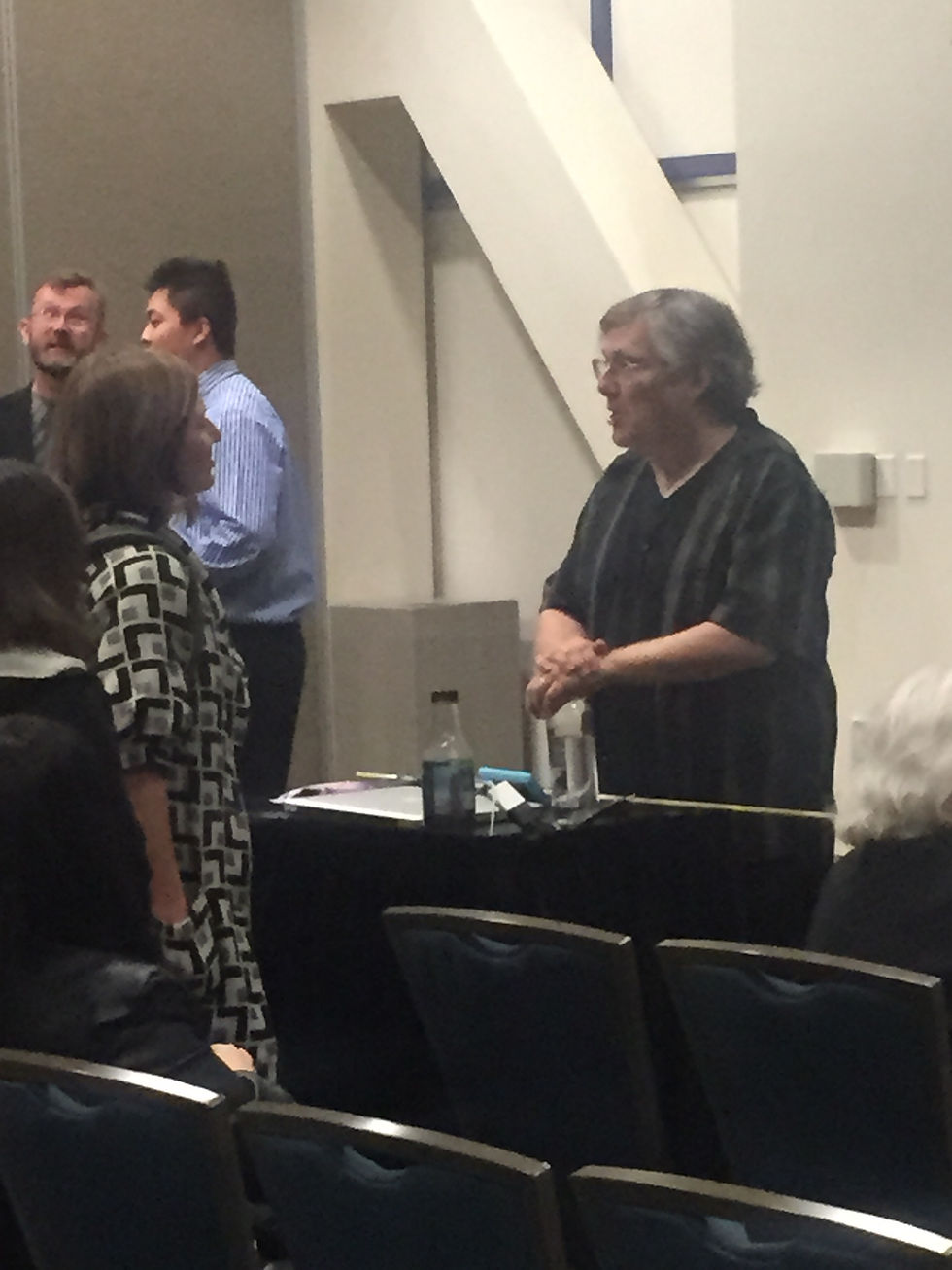Comics theorist visualizes communication
- Steven Shinder
- Mar 15, 2016
- 3 min read

Audible choir music from an Ash Wednesday service next door did not interrupt the flow of the presentation by Scott McCloud, a comics theorist and cartoonist who wrote such works as non-fictional Understanding Comics (1993) and graphic novel The Sculptor (2015).
Standing before the audience of around fifty people at UC Irvine's Student Center, he began his 224-slide Powerpoint presentation, joking, “Don't even think about taking notes. You'll miss seven or eight slides.” Laughter erupted, and the title “Comics and the Art of Visual Communication” was projected onscreen.
The intention was to shine a light on the evolution of comics and how visual communication has become useful in the world. McCloud clicked the remote, progressing through slides depicting a line with two dots, explaining that visuals can be used to communicate different things. The marks that can make division signs can be repositioned to resemble two clouds above a horizon, or the eyes and mouth of a human face. Faces can be found in other images coincidentally, including a church in Fort Lauterdale which McCloud described as a “confused chicken.” This statement gave birth to more laughter.
He lectured that a cartoon is a way of drawing and seeing. Despite the “split around third grade or so” during which children may move from picture books to chapter books, visuals are still relevant. Even the littlest line can change the meaning of an entire image. McCloud brought up online program Grimace SDK, which displays facial expressions and aids autistic people in understanding facial expressions. A slide emphasized, “THERE ARE NO NEUTRAL VISUAL DECISIONS.” Every picture looks like it means something.
A later slide showed a sign captioned, “In Case of Fire Use / Stairway for Exit / Do Not Use Elevator.” The text was accompanied by a nonsensical picture with only black lines. In the center was an elevator containing three people. Two diagonal lines crossed through the elevator, vaguely communicating not to use it. The up arrow and down arrow above the elevator fueled more confusion. To the right was a bigger-looking person heading down a stairway toward the elevator. One flame was below the stairway while another was to the left of the elevator.
McCloud once asked Twitter followers for interpretations. One user suggested, “In case of two fires, ride the elevator heading to the larger fire.” Another wrote, “In case of DOUBLE FIRE, remember you're way too big to fit in the Demi-Human Containment Cell.” The one that got the most laughter from the audience was, “It doesn't matter what you do. You're still in fire.” McCloud then showed variations of the sign. One showed a person holding a staircase above a fire and was captioned “In Case of Fire Use Stairs.” Another was captioned “In Case Of Stairs Use Fire,” with a person aiming a flamethrower at stairs.
McCloud rearranged the original sign with clicks of his remote to clarify it. A red circle-backslash replaced the lines crossing out the elevator. The stairway now faced away from the elevator, and the now red fires were away from it. The arrangement of the text was cleaned up so that the lines read, “In Case of Fire / Do Not Use Elevator / Use Stairway for Exit.” He then added an “EXIT” sign with an arrow pointing toward the stairway, hammering the point that visual communication could make or break people in emergencies.
A comic strip depicted a female illustrator growing up alongside a creature, which flew her outside of the panels, revealing that comic book artists can get creative with the format. Leaving the audience with this in mind, the Powerpoint ended, and Q&A began. A fan asked about career opportunities in comics. McCloud explained this in three steps: 1) “Make something compelling for readers.” 2) “Tell somebody about it.” 3) “See what comes up.” He clarified that step one could take a decade to complete and encouraged aspiring comic book creators to find collaborators through the web. Another attendee asked him to define success. He answered, “Something that's alive in the world that gives something real.”
After Q&A, attendees quickly lined up in the aisle, visibly eager to get autographs. One of them, a student named Miles Bonner, had finished a book report on McCloud's Understanding Comics a day prior, some points of which, according to him, were reiterated in the presenation. “This is my first time I read anything by him,” he commented. Reflecting on the presentation, he continued, “I liked a lot of his ideas about giving information in a nonlinear way. Like, using more than words to communicate your meaning.” Bonner plans on giving the autographed book to a friend for Christmas.




Comments